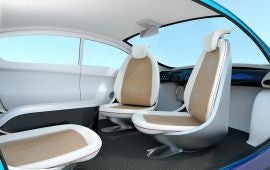
One of the challenges in quantum computing is overcoming 3D spin-glass optimization limitations, which can slow down quantum simulation meant to solve real-world optimization problems. An experimental solution is D-Wave’s Advantage quantum computer, running spin-glass dynamics (essentially a sequence of magnets) on 5,000 qubits.
According to a study by scientists from D-Wave and Boston University, published in the journal Nature, the team has validated that quantum annealing — a mathematical process used to find low-energy states by using quantum fluctuations — can improve solution quality faster than classical algorithms, at least theoretically. It may be a key step forward in showing the ways in which a quantum processor can compute coherent quantum dynamics in large-scale optimization problems.
D-Wave customers who subscribe to the Leap quantum cloud service can access the new commercial-grade, annealing-based quantum computer as of April 19.
Jump to:
- Quantum annealing improves efficiency
- New developments in spin glass quantum computing
- Looking forward: D-Wave’s Advantage2 system and more
Quantum annealing improves efficiency
The main takeaway for enterprises is that spin-glass computing on a quantum annealing device may eventually be able to efficiently solve optimization problems, achieving a goal with as little energy as possible. For example, it could be a relatively efficient way to answer questions such as “Should I ship this package on this truck or the next one?” or the ‘traveling salesman problem’ (“What is the most efficient route a traveling salesperson should take to visit different cities?”), as D-Wave wrote.
D-Wave is one of the only companies that offers enterprise quantum computing space with both gate and annealing programs, which now includes its 5,000 qubit, commercial-grade Advantage quantum computer. There is still some question as to how practical this technology is, but the new paper is proof that further commercial quantum computing optimization can be performed on D-Wave’s hardware.
SEE: Should IT teams factor quantum computing into their decisions?
New developments in spin glass quantum computing
Getting deeper into the physics, spin glasses are often used as test beds for paradigmatic computing, the researchers said, but using this approach in a programmable system — and therefore one that can be used to do practical calculations — still leads to potential problems. D-Wave has solved this on its hardware by using quantum-critical spin-glass dynamics on thousands of qubits with a superconducting quantum annealer.
“The same hardware that has already provided useful experimental proving ground for quantum critical dynamics can be also employed to seek low-energy states that assist in finding solutions to optimization problems,” said Wojciech Zurek, theoretical physicist at Los Alamos National Laboratory and leading authority on quantum theory, in D-Wave’s press release.
Achieving low-energy states faster
Applications that solve optimization problems like the packaging shipping question above require a minimum energy state from the quantum annealing processors they run on. Other calculations that could be used for decision-making, such as probabilistic sampling problems, need good low-energy samples in order to run.
D-Wave says “spin glasses can be brought into low-energy states faster by annealing quantum fluctuations than by conventional thermal annealing.”
“This paper gives evidence that the quantum dynamics of a dedicated hardware platform are faster than for known classical algorithms to find the preferred, lowest energy state of a spin glass, and so promises to continue to fuel the further development of quantum annealers for dealing with practical problems,” said Gabriel Aeppli, professor of physics at ETH Zürich and EPF Lausanne, and head of the Photon Science Division of the Paul Scherrer Institut.
Maintaining qubit coherence
Another problem researchers in the quantum computing world are trying to solve is qubit coherence. In a simplified sense, coherence means that a quantum state maintains certain physical qualities while in use. Research shows that coherent quantum annealing can improve solution quality faster than classical algorithms.
“Hand-in-hand development of the gate and annealing programs will bring us to longer coherence times and better qubit parameters, allowing our advantage over classical optimization to grow,” Andrew King, director of performance research for D-Wave, wrote in a blog post.
“Quantum annealing can be used for a wide range of practical optimization applications,” Murray Thom, vice president of quantum business innovation at D-Wave, told TechRepublic. “For example, it is already being used today to optimize supply chains, employee scheduling, e-commerce delivery, missile defense, protein folding, fraud detection, and industrial manufacturing, just to name a few.”
Looking forward: D-Wave’s Advantage2 system and more
While the newly published research was conducted on the currently commercially available Advantage quantum computer, D-Wave is also working on its next iteration. The Advantage2 system is in the experimental prototype stage and will be D-Wave’s sixth-generation quantum computing hardware. D-Wave anticipates the full Advantage2 system will launch with 7,000 qubits and does not have a projected release date for the alpha version.
“Moving forward, we expect to see annealing quantum computers increase their business impact as technological enhancements in qubit coherence yield higher quality solutions and enable higher connectivity architectures,” Thom said.
He expects over the next five years to see more development of gate model systems, an alternative to quantum annealing which has seen some interest from the pharmaceutical industry.
“Scalable, error-corrected gate-model machines will begin to emerge and begin to show early business value,” he said.
D-Wave’s competitors in quantum computing
D-Wave competes with other quantum computing systems and software providers such as Rigetti Computing, Google, IBM, Honeywell, and IonQ.







